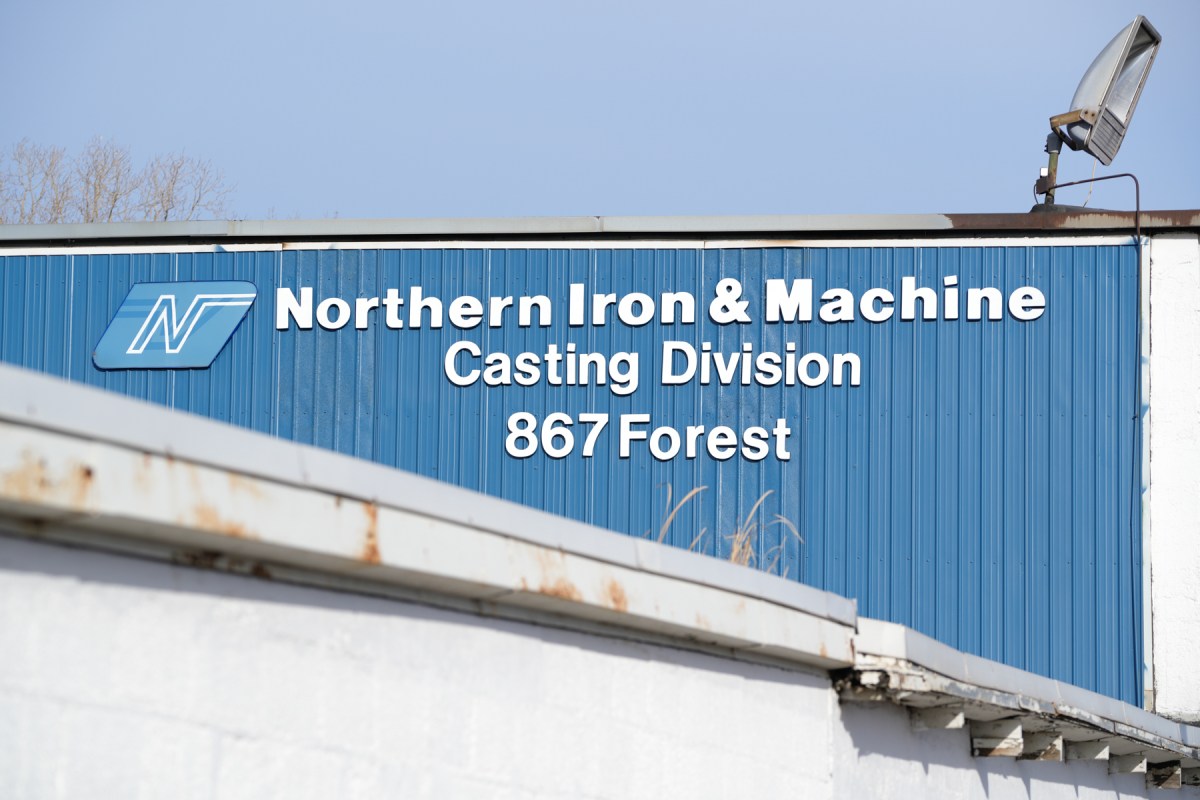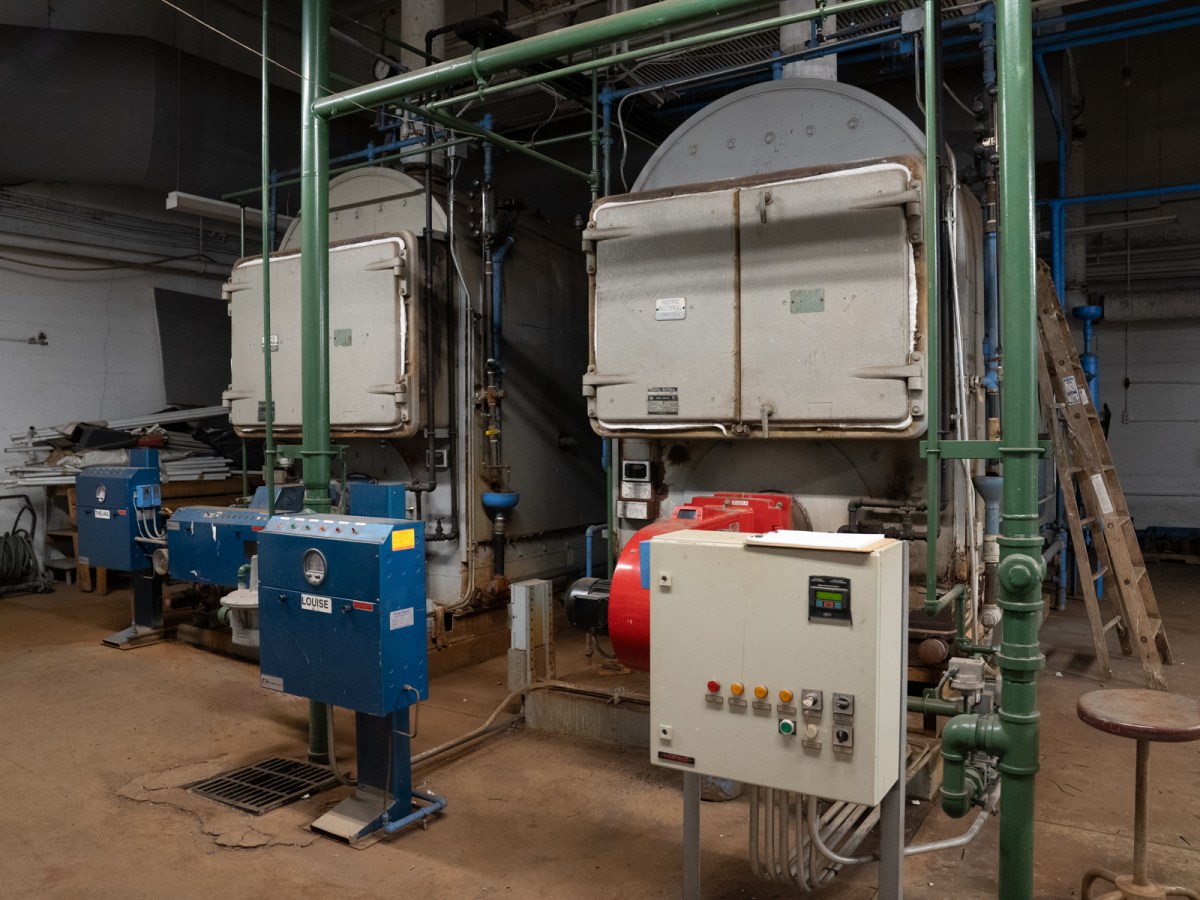A metal foundry on St. Paul’s East Side is contesting orders by state regulators to rein in its pollution levels.
Northern Iron and Machine filed for a temporary injunction against the Minnesota Pollution Control Agency (MPCA) in Ramsey County District Court on May 15. The foundry, located off Forest Street near Phalen Boulevard, is asking a judge to intervene by issuing a decision that stops the state from enforcing its order.
The MPCA ordered the foundry in April to limit its emissions by May 17 after new data suggested that Northern Iron produces particulate matter and lead pollution far above state and federal standards.
The company argued in its court filing that the emission projection data used to issue that order is flawed. At a Tuesday hearing, a judge ordered mediation on May 31, meaning a neutral mediator will try to help both sides reach a compromise on the issue.
Northern Iron is required to limit its hours and operations while the court case heads to mediation next week, said Courtney Ahlers-Nelson, MPCA’s industrial division director. She joined a host of MPCA and public health officials Wednesday night to address community members at a public meeting about pollution from Northern Iron.
“What happens at Northern Iron has a direct impact on this community,” Ahlers-Nelson said.
The emission projection data was required by a stipulation agreement reached last fall between the company and the MPCA. The foundry was also fined $41,500 for several violations, mostly related to its failure to inform regulators of changes to its pollution control equipment.
Pollution concerns
New pollution estimates, known as modeling, for Northern Iron showed alarming levels of particulate matter and lead pollution, according to an April 16 administrative order from the MPCA directing the foundry to lower emissions in 30 days.
The MPCA received the emission projections in February, which showed “substantial exceedances” of the National Ambient Air Quality Standards set by the federal Environmental Protection Agency. The modeling did not estimate emissions based on the facility’s actual operating hours, but rather, estimated emissions as if the foundry was operating 24 hours a day, seven days a week.
Further estimates submitted by the company reflecting their typical operations still indicate particulate matter emissions above national standards, according to the MPCA’s administrative order.
The facility generally operates 12 hours a day, five days a week, according to court filings. The foundry’s parent company, Lawton Standard, said the modeling shows a “distorted picture of the real impact that Northern Iron’s operations have on air in the vicinity.”
Northern Iron argued in court filings that the MPCA used a much larger baseline level of lead for its emissions projection than the company believes is accurate. The MPCA requested modeling with an assumption that the average lead content at the plant is 0.1 pound of lead per ton of scrap metal. The company argued that the more accurate amount is 0.0058 pounds of lead per ton. The MPCA argued in its administrative order that the company’s stated value is far too low.
The company issued a statement Wednesday saying it does not use lead in its operations, and that it is committed to providing a better path forward for the community.
The MPCA ordered Northern Iron to test its scrap metal for lead beginning last week. Under the administrative order to lower pollution, the company can only operate 10 hours per day, five days per week, and has limits on the amount of scrap it can melt, according to Rachel Studanski, an air compliance supervisor for the MPCA.
Regulators required Northern Iron to seal all doors, windows, and vents within 10 days of the administrative order being issued. The company has completed that step, Studanski said.
The MPCA used estimates of actual Northern Iron operations and meteorological data from the past five years to determine the geographic space affected by the pollution. The area that could experience lead pollution is in the immediate vicinity of the facility, which includes several residential neighbors. Particulate matter pollution sprawls across much of the greater East Side, according to the MPCA.

Public health
Particulate matter and lead pollution can cause serious health impacts, according to the Minnesota Department of Health, which had representatives at the Wednesday meeting.
Particulate matter, tiny particles of pollution, are easily inhaled and contribute to a variety of respiratory and cardiovascular issues. Lead is considered extremely dangerous, particularly to pregnant mothers and young children, and can lead to neurological, gastrointestinal, and cardiovascular issues, according to the World Health Organization.
“We know that this area of St. Paul already has high levels of lead from a variety of sources,” said Stephanie Yemdell, a supervisor in the Minnesota Department of Health’s health risk intervention unit.
The state health department is working with Ramsey County Public Health to conduct lead testing on soil in the area this summer, and plans to help with several free blood-lead testing events. Lead lingers in the bloodstream and has a halflife of around three months, meaning if the source is stopped, it will continuously lower over time, Yemdell said. Public health workers try to identify and eliminate sources, and will generally only prescribe medication in extreme cases, she said.
“We really encourage people to have their kids tested,” Yemdell said.
The MPCA set up its own monitor in the area to measure lead pollution, which needs to regularly capture and test samples in a lab. So far, lead levels detected are below federal standards. But many more samples are needed in order to meet a three-month average that is preferred by state and federal regulators.
More info, engagement wanted
Issues at urban metal foundries in the Twin Cities are prevalent. The Environmental Protection Agency has two ongoing enforcement matters at similar facilities: Smith Foundry in south Minneapolis and St. Paul Brass and Aluminum in St. Paul’s Frogtown neighborhood.
The MPCA has held community meetings in Minneapolis on Smith Foundry’s violations that ended up with residents and activists taking control of the agenda, demanding that officials answer their questions before the entire room. The agency ran a tighter ship in St. Paul Wednesday, with staff members from different departments and partner agencies going through a presentation before breaking into smaller groups to field questions from residents.
“Some of it was confusing,” said Tsua Her, a St. Paul resident who came to learn more about the pollution impacts. “They didn’t specify enough.”
The maps of particulate matter and lead pollution could have been more detailed, Her said, adding that it was hard to know how concerned he should be.
Melissa Lorentz, an environmental attorney who lives near Northern Iron, has been working to help her neighbors understand the enforcement case from 2023 and the current administrative order. She said she appreciated the MPCA sharing information with the public, and having experts on hand to answer questions.
Still, she thinks it took too long for regulators to act. An MPCA memo from February 2023 showed that engineers at the agency believed lead levels at the foundry were likely exceeding federal standards. The MPCA said that modeling was not robust enough to use in a regulatory capacity, and it needed the more stringent modeling submitted this year to issue its administrative order.
“I am glad they are doing this enforcement action, because I’ve been wondering when they were going to do something,” Lorentz said.
Kartumu King, a longtime East Side resident and member of the Environmental Justice Coordinating Council, said the meeting was a good start. But she wants to see the state hold more informal informational sessions and distribute testing resources directly in the impacted area. Most residents near the foundry are working class, and many are immigrants, she said, and coming out to a gym on a weekday evening is a big lift.
“I wish they would have had more people from the neighborhood at the meeting,” King said.





